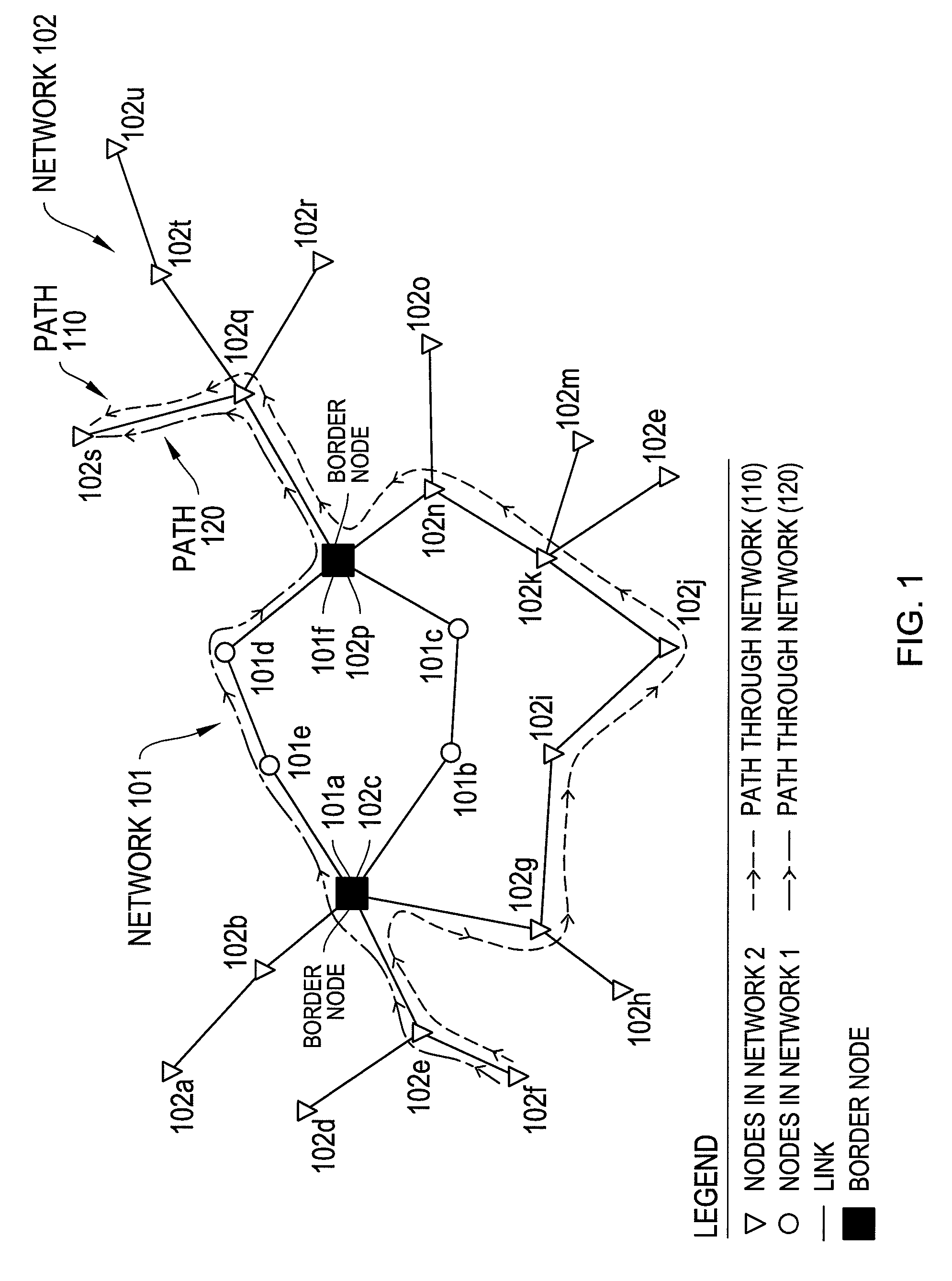System, device, and method for unifying differently-routed networks using virtual topology representations
a virtual topology and network technology, applied in the field of system routing, can solve the problems of limited network security, sharp increase in power consumption, and rapid stale routing information, and achieve the effect of enabling network routing efficiency
- Summary
- Abstract
- Description
- Claims
- Application Information
AI Technical Summary
Benefits of technology
Problems solved by technology
Method used
Image
Examples
Embodiment Construction
[0034]To provide an overall understanding of the invention, certain illustrative embodiments will now be described. However, it will be understood by one of ordinary skill in the art that the methods described herein may be adapted and modified as is appropriate for the application being addressed and that the systems and methods described herein may be employed in other suitable applications, and that such other additions and modifications will not depart from the scope hereof.
[0035]FIG. 1 is a diagram of two ad-hoc networks, Network 101 and Network 102, in which the systems, devices, and methods described herein may be implemented. Each of the two networks comprises several nodes. Network 101 comprises nodes 101a-101f, designated by circles. Network 102 comprises nodes 102a-102u, designated by inverted triangles. There are two border nodes common to both Network 101 and Network 102. The first border node is labeled 101a / 102c and the second border node is labeled 101f / 102p. Each of...
PUM
 Login to View More
Login to View More Abstract
Description
Claims
Application Information
 Login to View More
Login to View More - R&D
- Intellectual Property
- Life Sciences
- Materials
- Tech Scout
- Unparalleled Data Quality
- Higher Quality Content
- 60% Fewer Hallucinations
Browse by: Latest US Patents, China's latest patents, Technical Efficacy Thesaurus, Application Domain, Technology Topic, Popular Technical Reports.
© 2025 PatSnap. All rights reserved.Legal|Privacy policy|Modern Slavery Act Transparency Statement|Sitemap|About US| Contact US: help@patsnap.com



